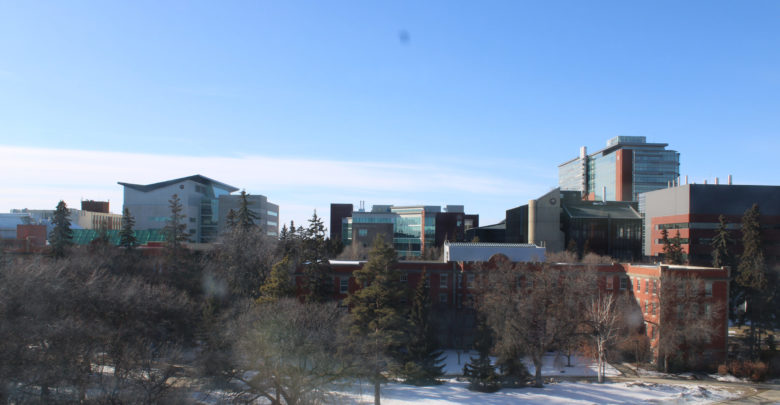 Amanda Sparks
Amanda SparksIn 2010, AlbertaSat started its exploration into space in order to compete in the Canadian Satellite Design Challenge (CSDC). Today, the project continues their work on CubeSats in their two subsequent launches.
AlbertaSat provides students with a hands-on way to learn about space science technology. The organization is made up of students and faculty at the University of Alberta, and focuses on building and designing cube nanosatellites — also called CubeSats — which are miniature satellites.
AlbertaSat’s project manager and engineering student Thomas Ganley, said that the team wanted to “be advocates of Canadian space science technology, while also creating novel technology development projects.”
Ganley added that in addition to the core mission of satellites, AlbertaSat has had a number of side-missions, “designed to help students get their hands dirty and get a little bit of experience before they try and tackle these things.”
“Anything kind of space-science technology-oriented, we get to be involved in,” Ganley said.
Dan Sameoto, a co-investigator and professor of mechanical engineering at the U of A, said that while these satellites only last around two years in space, they’re “extremely inexpensive in comparison to virtually every [other] satellite you could launch.”
The project began its journey in 2010, but it took another seven years for it to make its way into space. In 2017, the team launched Experimental Alberta #1, nicknamed Ex-Alta 1.
This first version studied space weather patterns. It gathered information from an altitude of 200 to 400 kilometres, where there has not been a lot of prior investigation.
“Ex-Alta 1 represented a first step for many of the participants, and allowed the U of A and the rest of the province to demonstrate the ability to undertake such a project,” AlbertaSat’s website said.
Sameoto explained that Ex-Alta 1 was a unique opportunity because it was a part of the QB50 project. This project was internationally organized by the von Karman Institute for Fluid Dynamics, an international non-profit based out of Belgium. QB50 put 50 CubeSats that were designed by universities across the world into space.
AlbertaSat received one satellite from the institute, then built one themselves. Collaborating with the von Karman Institute gave the team some external guidance to help make the launch happen.
“It was very much a learning opportunity, because no one at the U of A — none of the professors, none of the students — had ever actually launched a satellite before,” Sameoto said.
The opportunity for the AlbertaSat project to create a second CubeSat, Ex-Alta 2, came from the Canadian government.
“As part of a promotion for the 150th anniversary of the country, there happened to be an opportunity to fly [for the project] with a discounted rate … which massively reduced the cost for us pulling this off. Otherwise, it might’ve been years before we could have successfully funded another launch opportunity,” Sameoto said.
In the aftermath of the 2016 Fort McMurray wildfire, the team decided to shift the focus of their CubeSats.
“The wildfires were on the top of the mind for a lot of individuals, as a potential thing where the application [of the CubeSats] might have had some real impact on the province. If we’d known about the wildfire earlier, then a lot less damage could’ve occurred,” Sameoto said.
The mix of the Canadian government reducing the cost of the project and the incentive of the wildfires gave AlbertaSat an opening for another CubeSat project.
Since this latest CubeSat is meant for wildfire imaging, about a third of Ex-Alta 2 is occupied by an imaging camera called Iris, which was entirely built, developed, and tested by students. However, because the satellite is meant to take pictures, it must be able to stay still enough to accurately capture those images.
“Because the students picked imaging as its primary purpose, the positioning accuracy is extremely important. We had to push the limits of engineering to get the power necessary to get all the instruments to run,” Sameoto said.
Ex-Alta 2 made its trip to the International Space Station (ISS) on March 14, 2023. Two other CubeSats, created in collaboration with Yukon University and Aurora Research Institute, were also sent to space with Ex-Alta 2. These two cubesats were focused on outreach, Ganley explained.
“The idea is that kids can submit artwork that will be displayed in space. Then a little camera will capture an image of the artwork with space in the background. That image will then be sent back to earth for students to see.”



